


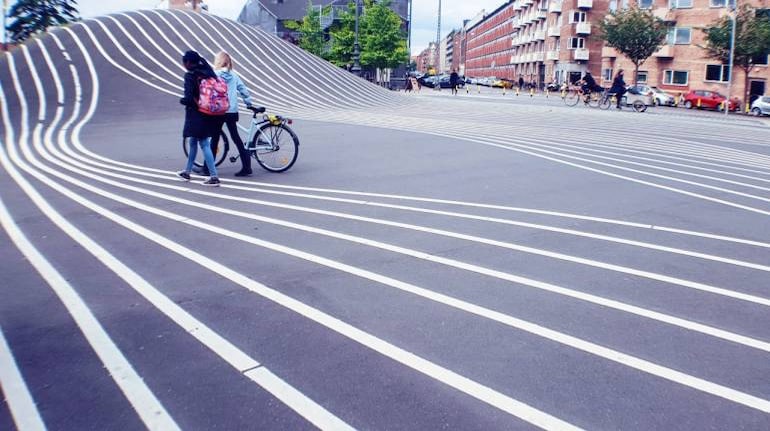
In March 2023, Forbes ranked Copenhagen as the ‘Best Place to Live for a Good Work-Life Balance’. This comes close on the heels of another list – UN’s Annual World Happiness Report – where Denmark came in second. Nordic countries repeatedly top surveys ranking livability and quality of life. And it’s not surprising. Denmark, for example, puts a big emphasis on outdoor living, good design, accessible public spaces, and vibrant neighbourhoods. Even as a visitor to its capital Copenhagen, you can experience these unique aspects of Danish culture. Here’s a roundup of where to go and what to do to see how locals live and unwind in Copenhagen:
Biking through the City
Let’s throw another statistic into the mix. For years, Copenhagen has been the voted ‘the world’s most bicycle-friendly capital city’. Cycling is the preferred mode of transport here, and you’ll see more bikes than cars on the street. Copenhagen’s infrastructure is built to be bike friendly: there are more than 388km of cycle tracks, plus cycle-only bridges across the city’s waterways. Biking is good for both people and the planet, and Copenhagen makes it easy for tourists to experience this essential part of their culture with bike rentals and cycle tours.
Boats & Baths
Much of Copenhagen’s outdoor life centres around its harbour, which doubles up as a space for recreation. It’s not uncommon to see locals hit the water in a kayak in the middle of the afternoon, or find people swimming in designated ‘harbour baths’ when the sun is out. One of the best ways to explore the city is by water. Open-top boats operate cruises through Copenhagen’s narrow canals and the harbour, taking in the city’s most iconic sights like the Opera House and the Black Diamond. You can also pack a picnic and navigate your own rental boat if you’re feeling adventurous.
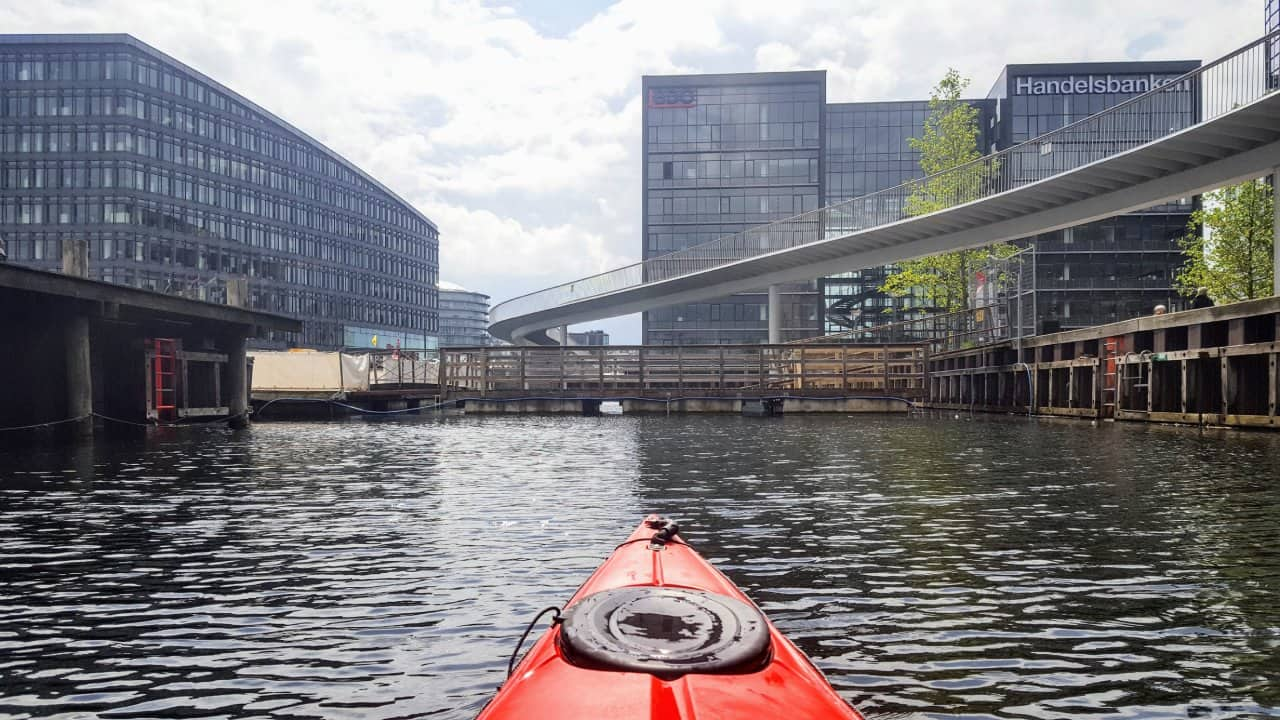 It’s not uncommon to see locals in Copenhagen hit the water in a kayak in the middle of the afternoon, or find people swimming in designated ‘harbour baths’ when the sun is out. (Photo by Malavika Bhattacharya)
It’s not uncommon to see locals in Copenhagen hit the water in a kayak in the middle of the afternoon, or find people swimming in designated ‘harbour baths’ when the sun is out. (Photo by Malavika Bhattacharya)
Tivoli Gardens
What better way to kick off your Copenhagen explorations than a shake-up on some wild rides? One of the world’s oldest amusement parks, Tivoli Gardens was built in 1843 and still features some quaint old rides. The 100-year-old wooden rollercoaster built in 1914 is one such, gently trundling around an artificial mountain at an easy pace. For a crazier ride, the Daemon lives up to its name, with some scream-inducing 360-degree loops. The Hans Christian Anderson ride pays homage to the writer and frequent Tivoli visitor, taking you on a train ride through imitations of his fairytales.
Nyhavn
Legoland comes to life in this cool canalside Copenhagen quarter with pop-coloured buildings. Originally a port for commercial ships, the area used to be frequented by sailors visiting the pubs. Now, the old houses here have been restored and painted in bright colours of orange, red and green, with shuttered windows and sloping roofs. Inside these buildings are restaurants, cafes, and bars that spill out onto the streets. Grab an outdoor table when the weather’s good, get a bite to eat and watch the sailboats and charming wooden dinghies pass by.
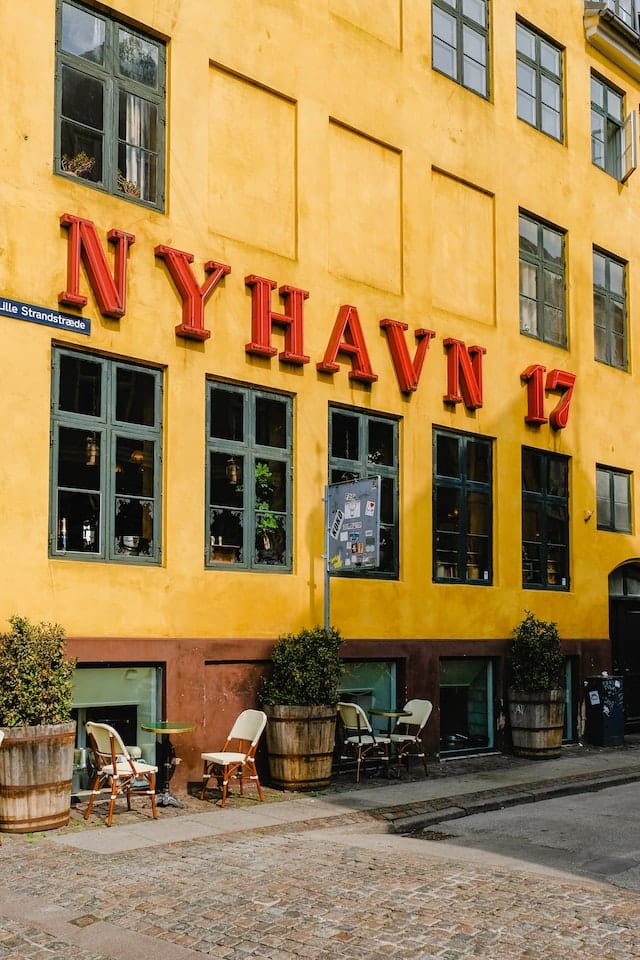 In Nyhavn, Copenhagen (Photo by Shvets Anna via Pexels)
In Nyhavn, Copenhagen (Photo by Shvets Anna via Pexels)
Little Mermaid Statue
Possibly the most iconic Copenhagen structure, the little mermaid statue at the Langelinje Pier is, frankly, quite underwhelming. But no visit to the city would be complete without a look at the Hans Christian Anderson inspired bronze and granite sculpture upon a rock. The most interesting aspect of this statue is the number of stories surrounding it – it’s been the victim of vandalism many times; the head has been removed (and replaced) twice. However, now she’s whole and hordes of tourists wait patiently to get a picture with her.
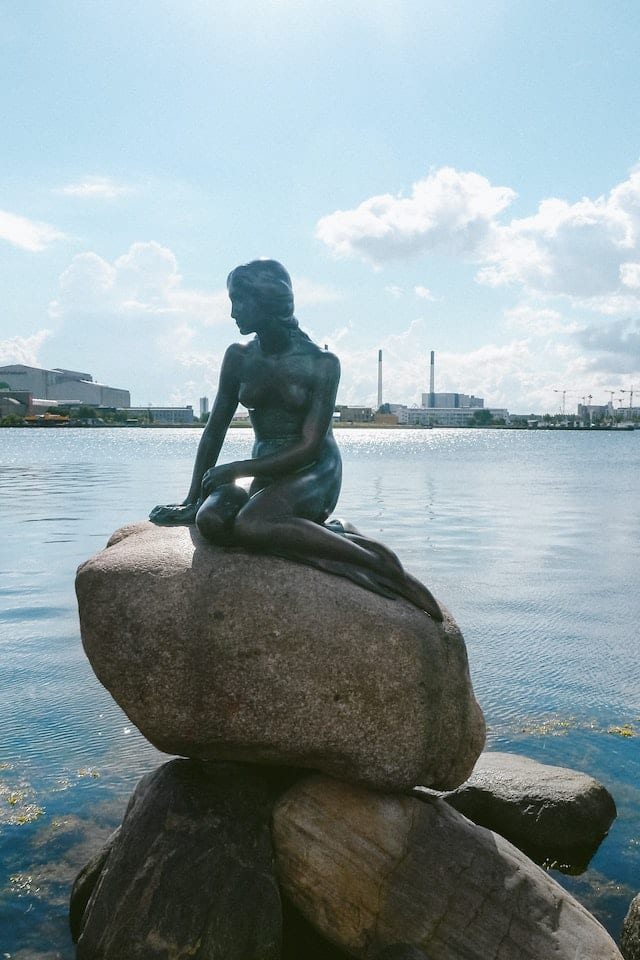 Little Mermaid Statue in Copenhagen (Photo by Robert Fisk via Pexels)
Little Mermaid Statue in Copenhagen (Photo by Robert Fisk via Pexels)
Design Museum
Possibly the most unique of Copenhagen’s many museums, the Design Museum is housed in a Rococo-style former hospital building. Danish design trends in furniture, interiors and décor are all showcased here. From quirky lamps to futuristic chairs, whimsical glassworks and brightly painted porcelain pieces, all kinds of innovative bric-a-brac find place here. It’s a must-visit for those interested in art and design. If the styles catch your fancy, pick up glass or ceramic designs at the museum shop.
Hans Christian Anderson’s Grave at Assistens Cemetery Park
Denmark’s best-known literary icon, Hans Christian Anderson contributed endlessly to the imagination of children around the world with his fairy tales. The author lies buried at the Assistens Cemetery in Copenhagen. The graveyard is over 200 years old, and today, it is an important green lung in the city. Locals come with pets and their children to sprawl on the grass, teach their kids to cycle, and enjoy the fresh, green space. Many of Denmark’s famous personalities lie buried here, and there’s a cultural centre that hosts theatre and other events.
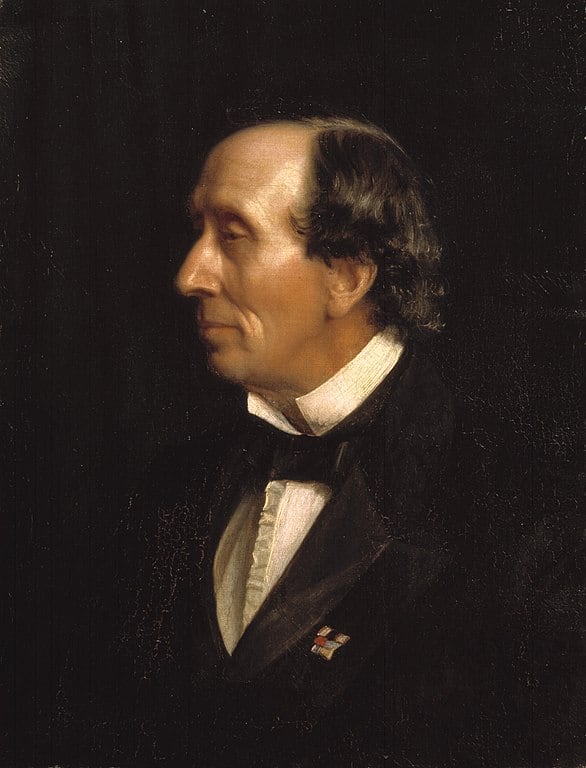 Portrait of H.C. Andersen,1869, from the private collection of Carl Bloch (Photo via Wikimedia Commons)
Portrait of H.C. Andersen,1869, from the private collection of Carl Bloch (Photo via Wikimedia Commons)
Superkilen
As public spaces go, Superkilen is hard to match. Designed by Danish architecture giant Bjarke Ingels Group, the urban space blends funky design and public art, and aims to foster community participation. This area is among Copenhagen’s most ethnically diverse neighbourhoods, home to over 60 nationalities. In a hat tip to the neighbourhood’s background, the Red Square incorporates elements from each of the 60 nationalities into its design: a boxing ring from Thailand, a sound-system from Jamaica, a climbing gym from India.
Adjoining the Red Square, the Black Market is a favourite with local photographers for its creative design. Wiggly white lines run all over the undulating landscape, giving the impression that the square is more optical illusion than public park. Fitted into the ground are tables with chessboards printed on them, a Moroccan fountain, and artfully designed benches.
Meatpacking District
A trendy area today, the Meatpacking district had less salubrious beginnings as a primarily industrial area and home to Copenhagen’s meat industry. Gradually, bars, restaurants, designers, and galleries moved into the warehouses, redefining the mood, and today, the district embodies the term “industrial-chic.” The area is ideal for a cycle ride in the daytime, to get a look at the low-roofed brick buildings and explore the pop-up art galleries in the warehouses. Come back in the evening, when the area is buzzing with music and partygoers. Beer-aficionados can head to Warpigs for a craft brew by Danish brewer Mikkeller. With a string of bars and clubs packed into the area, this is where you should head for a late night out on the town.
Day Trip to Roskilde
Around 40 kilometres from Copenhagen, Roskilde is best known for the massive music festival that draws hordes of revellers. Originally, Roskilde is Viking territory. Visit the Viking Ship Museum, which houses five original 11th century ships. At the boatyard, rope makers and blacksmiths demonstrate how ships were made in the old days, using materials like horsehair. To truly get into the Viking spirit, sail down the fjord in an authentic wooden Viking sailing ship. Row using massive oars, hoist the sails, and take in the postcard-perfect countryside. This year, the Roskilde Festival will take place from June 24-July 1, and feature acts like Blur, Queens of the Stone Age, and Kendrick Lamar.
Discover the latest Business News, Sensex, and Nifty updates. Obtain Personal Finance insights, tax queries, and expert opinions on Moneycontrol or download the Moneycontrol App to stay updated!
Find the best of Al News in one place, specially curated for you every weekend.
Stay on top of the latest tech trends and biggest startup news.